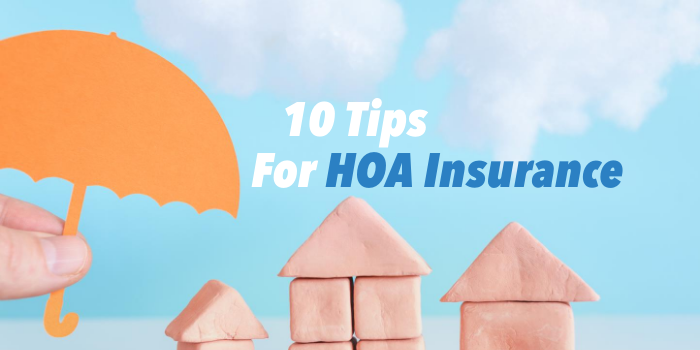When you research insurance as a homeowner, your decision only impacts you and your family. However, when you research insurance as a board member, it impacts all your neighbors and their families.
So, it’s important to find the right-sized policy for your association instead of a one-size-fits-all policy. Here are some tips to find the best balance between protection and cost.
Below are our ten tips to familiarize you with the basics of HOA insurance:
- Examine state legislation and consult your community manager to determine state-mandated insurance requirements. Checking that your insurance complies with your state’s statutes protects the HOA from any potential legal action.
- See what your association’s governing documents say about insurance. Governing documents usually mandate insurance requirements by specifying the minimum amount that’s required and what property the association is responsible for insuring.
- Amend your governing documents to require the recommended minimum for HOA insurance. Legally establishing a reasonable amount of insurance for your association and conducting regular insurance audits will help protect your community from future insurance gaps.
- Have a qualified professional, such as an HOA insurance broker, determine a reasonable amount of insurance for your association. When looking for a broker, choose one that specializes in both commercial insurance and associations, as many associations are underinsured because insurance companies generally do not realize how complex association insurance is.
- Obtain directors’ and officers’ liability insurance, as well as workers’ compensation. Here at SpectrumAM, we require D&O coverage in our contracts, but we highly recommend boards also look into worker’s compensation for volunteers. All non-profit organizations should obtain both types of insurance to better mitigate risk for their serving members and volunteers to protect the association, and the individuals inside it.
- Notify your insurance broker of any property additions or improvements that need coverage. Our community managers complete the statement of values on behalf of the board and notify the insurance broker when property additions or improvements are made. Board members may not realize that most policy plans will not automatically cover additions, so your manager will ensure any modifications are covered to prevent a gap in coverage.
- Understand what types of coverage you’re paying for, and determine whether they’re necessary. Insurance is confusing at best, leading many boards to choose (often unintentionally) boilerplate insurance, so make sure you’re not paying for unneeded – and therefore unhelpful – coverage. Your community manager can help you review your policies.
- Plan ahead, so the board doesn’t receive a last-minute quote. Understand that most insurance companies will usually start the quoting process 90 days before renewal is due, so start the process as soon as possible.
- Finance your insurance premiums over the course of the year, rather than paying all at once. While finding an insurance company that will let you finance in installments may be challenging, doing this adds another layer of financial protection to your association. Our partners at Mint Fish specialize in premium insurance financing.
- Ask your community manager for guidance throughout the insurance process. Your community manager can point you in the direction of a reputable insurance company, such as our partners at Blue Lime who offer expertise in the HOA insurance industry.
Following these ten tips will help you protect your association and keep your mind at ease!
Do you still need help with your HOA insurance? Why not head out over and check out Blue Lime Insurance group. They have a fresh approach to HOA insurance.







